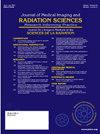津巴布韦磁共振成像(MRI)的可用性和成本调查:影响和改进策略。
IF 1.3
Q3 RADIOLOGY, NUCLEAR MEDICINE & MEDICAL IMAGING
Journal of Medical Imaging and Radiation Sciences
Pub Date : 2024-12-16
DOI:10.1016/j.jmir.2024.101819
引用次数: 0
摘要
导论:第六十届联合国世界卫生大会第60.29(18)号决议敦促会员国收集、核实、更新和交流关于卫生技术,特别是医疗设备的信息。本研究评估了津巴布韦MRI服务的可用性和成本,确定了差异,并讨论了对患者护理和医疗公平的影响,提出了基于证据的改进策略。方法:采用横断面调查的方法获取所有MRI设备的规格,包括制造商、磁体类型、磁场强度、位置和安装年份。获得的数据使用Stata 13进行分析。结果:截至2024年4月27日,津巴布韦共有11台核磁共振成像仪,其中9台运行,2台未运行。这些扫描仪中的大多数(8台[73%])位于私营卫生部门。所有的单位都位于城市省份。在11个单位中,7个(64%)位于哈拉雷都会省,3个(27%)位于布拉瓦约都会省,1个(9%)位于中部省。所有的核磁共振检查,除了头部扫描,在私营部门比公共部门更昂贵。结论:对津巴布韦核磁共振成像设备的可用性和使用情况的调查显示,在获得这一关键诊断工具方面存在重大差异。改进的策略包括对MRI设备的定向投资、医疗保健提供者的资助计划、设备共享计划、补贴计划、标准化协议以及原始设备制造商与政府之间的战略合作。本文章由计算机程序翻译,如有差异,请以英文原文为准。
A survey of magnetic resonance imaging (MRI) availability and cost in Zimbabwe: Implications and strategies for improvement
Introduction
Resolution 60.29 (18) of the 60th United Nations World Health Assembly urges member states to gather, verify, update, and exchange information on health technologies, especially medical devices. This study assesses Zimbabwe's MRI service availability and cost, identifies disparities, and discusses implications for patient care and healthcare equity, proposing evidence-based improvement strategies.
Methods
A cross-sectional survey was conducted to capture the specifications of all the MRI equipment, including manufacturer, type of magnet, magnetic field strength, location, and installation year. Data obtained was analyzed using the Stata 13.
Results
As of 27 April 2024, there were 11 MRI scanner units in Zimbabwe, 9 of the MRI machines were operational, while 2 were not operational. The majority of these scanners (8 [73 %]) are located in the private health sector. All the units are situated in urban provinces. Out of the 11 units, 7 (64 %) are located in the Harare Metropolitan Province, 3 (27 %) are in the Bulawayo Metropolitan Province, and 1 (9 %) is in the Midlands Province. All MRI examinations, except for head scans, were more expensive in the private sector compared to the public sector.
Conclusions
The survey on MRI equipment availability and utilization in Zimbabwe revealed major differences in access to this critical diagnostic tool. Strategies for improvement include targeted investments in MRI units, funding programs for healthcare providers, equipment-sharing initiatives, subsidy programs, standardized protocols, and strategic collaborations between Original Equipment Manufacturers and the government.
求助全文
通过发布文献求助,成功后即可免费获取论文全文。
去求助
来源期刊

Journal of Medical Imaging and Radiation Sciences
RADIOLOGY, NUCLEAR MEDICINE & MEDICAL IMAGING-
CiteScore
2.30
自引率
11.10%
发文量
231
审稿时长
53 days
期刊介绍:
Journal of Medical Imaging and Radiation Sciences is the official peer-reviewed journal of the Canadian Association of Medical Radiation Technologists. This journal is published four times a year and is circulated to approximately 11,000 medical radiation technologists, libraries and radiology departments throughout Canada, the United States and overseas. The Journal publishes articles on recent research, new technology and techniques, professional practices, technologists viewpoints as well as relevant book reviews.
 求助内容:
求助内容: 应助结果提醒方式:
应助结果提醒方式:


